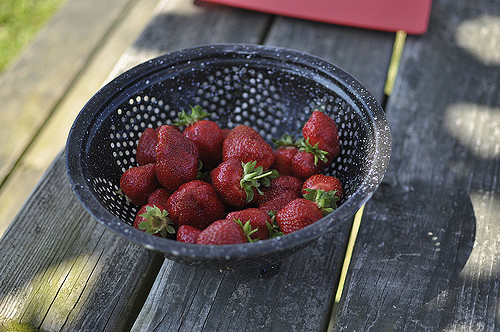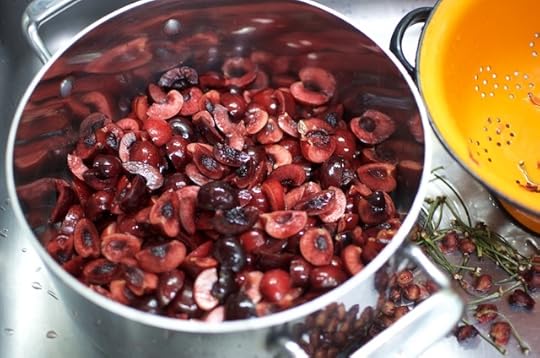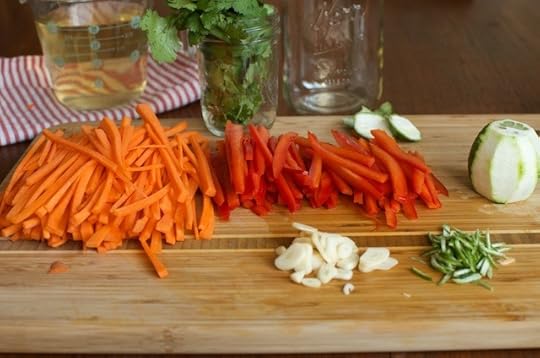Guest Post: Five Canning and Preserving Survival Tips by Lynne Curry
Today’s guest post comes to us from cookbook author and seasoned canner Lynne Curry. She’s dropping in to share some of her hard won canning wisdom with those who are just getting started, or who simply need to be reminded how to stay sane during the height of the preserving season. Enjoy! -Marisa

The strawberries and cherries have already come and gone for many of us, and the stone fruit avalanche is well under way. And that’s just the fruits! Before you know it, we’ll all be swimming in green beans and tomatoes, racing to pack them into jars.
As a longtime food preserver, I’ve had moments–even small-batch canning–when things nearly got out of hand. With the washing and sanitizing of jars, the peeling and cutting of fruits and vegetables and timing the steady boil in the canner, it’s a lot to manage!
Happily, I’ve adopted five practices from my professional life as a chef and recipe developer that keep me organized and productive from batch to batch over the entire growing season.
Best Canning Management Practices
Adopt the preserving mindset: Preserving food may happen in the kitchen but do not mistake it for cooking. It is a mechanical procedure that requires good organization, cleanliness and precision (for example, the instructions to leave one-half inch headspace in a pickle jar exist for good reason). So, clear off your countertops (you are going to need a lot of space!) and follow all the established and time-tested procedures of the recipe and canning guide to the letter.

Create a command center: The equipment and tools for canning are not every day cookware. So, gather the canner, jar lifter, lid rings and other paraphernalia into one designated area of your kitchen or in a box or milk crate. Then, when the plums or pickling cukes arrive at peak ripeness, you’re ready for them.
Prep in advance: Did I mention to clear off your counters? Having an uncluttered workspace is priority number one for not only practicality but your enjoyment of the process. In addition, there are lots of tasks you can tackle in advance, like scrubbing and trimming vegetables, preparing brine for pickles and gathering ingredients so they’re at your fingertips.

Choose your most productive time of day: When my kids were little, I canned only after bedtime. Now, I prefer to wake up early, pour myself a cup of coffee and get a canner load boiling before the kids wake up. Be sure to free up a block of time—two hours is my minimum for pickling, which is pretty quick—with no other demands to distract you from the work at hand.
Make a washing station: No preserving book I’ve ever read reveals the fact that canning involves rounds of hand washing from startup to cleanup. The single biggest laborsaving task I’ve found is to set up a dedicated washing station. If you don’t have a separate second sink like I do, fill two dishpans for washing and rinsing on an area of your tidy countertop with a dishrack on the side.
Now, let’s wash some jars and restock lids, because it’s Go Time.
Related Posts:
Quick Pickled Balsamic Strawberries
Guest Post: Transforming Your Jamming Fails
Guest Post: Aged Persian Garlic Pickles from Stefanie Kulhanek



